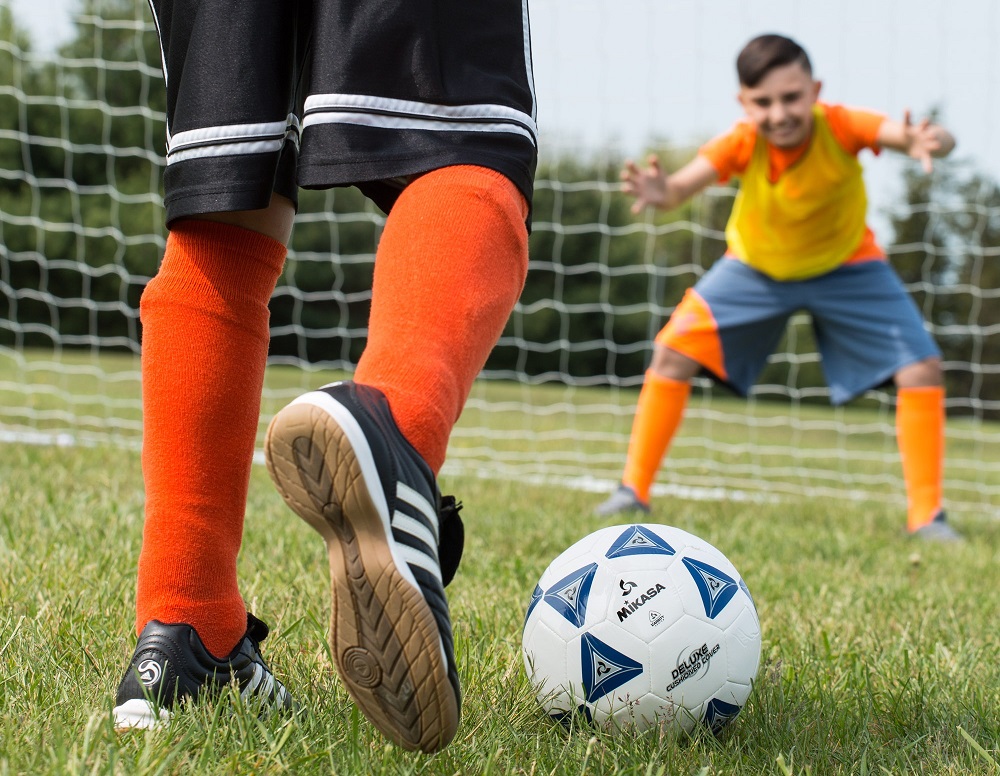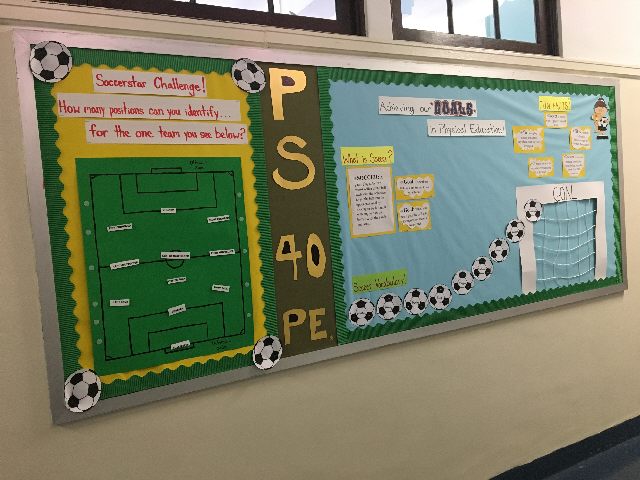
At S&S Worldwide we sell over 100 Soccer products, so if you’re unsure which ball is best for the needs of your program, event or activity – this guide will help you. There are many things to consider like where you will be using it, how old and the size the participants will be using the soccer ball, and your budget. We have included break down below with the differences of our soccer balls for you based on size, material, definition and brand.
What size soccer ball should you use?
It is important for kids to use the right size soccer ball for their age. A ball too big for a younger playing can be too difficult to use and could make the game unenjoyable. A ball that is too small can impede a player’s development. Use the table below to select the right size balls for your group. A size 5 is usually considered an “official” sized ball.
SIZES OF SOCCER BALLS
| Players Age | Size | Circumference | Nominal Diameter | Weight (ounces) | Weight (grams) |
| Up to 5 | 2* | 20 – 22” | 6.7” | 8.5 – 9.2 | 240 – 260 grams |
| 6 to 8 | 3 | 23 – 24” | 7.5” | 10.6 – 11.3 | 300 – 320 grams |
| 8 to 11 | 4 | 25 – 26” | 8.1” | 12.3 – 13.7 | 350 – 390 grams |
| 11 and up | 5 | 27 – 28” | 8.8” | 14.4 – 15.9 | 410 – 450 grams |
* size 2 balls can also be used by older players as a fun ball to build dribbling skills

Construction – Most soccer balls have a similar construction and include a valve for inflating the ball, a rubber bladder for air retention, a lining material to keep the ball from expanding and a cover or outer layer.

View ALL S&S SOCCER BALLS HERE
Soccer Ball Types
Rubber – Rubber balls have a one piece “cover” or outer layer that may have recesses to make it look like a sewn together ball. Instead of a lining of sewn together fabric material, it will have a thread wound around the ball to keep the ball from expanding when inflated. Rubber balls are usually less expensive and are used for recreational play and practice. While they don’t perform like a more expensive ball that has a sewn or stitched fabric cover, they can be very durable and can be used on any surface including blacktops. Better rubber balls will have a foamed rubber outer layer to provide a softer and livelier feel.
Stitched Synthetic and Composite Balls – This is the most used construction of soccer balls. These balls will have a fabric outer layer or cover made from polyurethane or vinyl that consist of a series of small panels that are sewn together. The “fabric” may consist of several layers of materials including a tough outer layer with a foam backing. Inside the outer layer will be a series of lining layers that made from fabric that will not stretch and that keep the ball round. Better balls will have multiple layers of lining material. Inside the liner is a bladder material that keeps the air inside the ball. Less expensive balls will have butyl rubber bladder that hold the air longer but results in a less lively ball. The best competitive play balls usually will have a latex rubber bladder that provide a lively response.
Molded Synthetic and Composite Balls – Similar to stitched balls, the outer layer of these balls of fabric. Instead of the panels being sewn together, the panels are bonded to the inner structure of the ball.
Leather Balls – Leather balls have been pretty much phased out. Leather tends to absorb water and as a result, the balls can become too heavy when used under wet or damp conditions.
Futsal Balls – A name given to soccer balls that are designed for competitive indoor play. These balls will usually have a construction very similar to a stitched ball described above, but will have some means of reducing the liveliness of a ball so that they do not bounce around too much when used in indoors. An official sized Futsal ball is about the size of a regular (outdoor) size 4 soccer ball.
Recreational Indoor Soccer Balls – For beginners and recreational play, indoor soccer balls may have a traditional clothing type of fabric for the outer layer and will have fewer layers designed to retain the size of the ball. These kid friendly and are good for teaching basic soccer skills.
Brands – Unlike in basketball where Spalding and Wilson are the dominant brands in high school, college and the pro’s, there are not any dominant soccer ball brands. S&S Worldwide offers soccer balls for recreational and competitive play at the high school and collegiate level from trusted brands like Mikasa, Wilson, Franklin and Tachikara, along with our own Spectrum line of balls for PE classes, recreational and competitive play at the youth soccer level.










Trust me there was nothing in this article that was hard to read or unclear. That was well written and i got almost every answer that was knocking my mind. I got enough knowledge regarding ball’s construction like leather cover, water absorption and etc.
Thank you so much for this amazing platform
Pingback: Basketball Buying Guide - S&S Blog